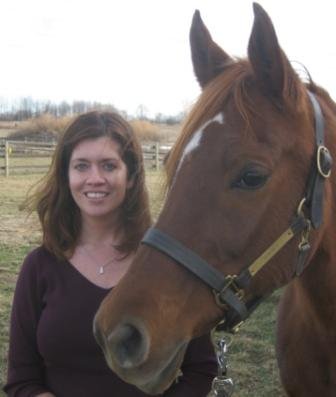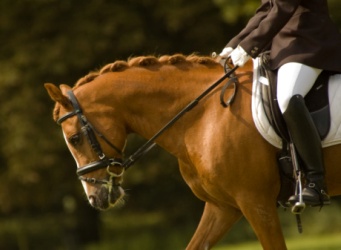Relating learning theory to teaching horses
What in the world is Learning Theory? What does it have to do with me and my horse?
Learning theory is a summary term for what is known from psychology and horse behavior about how animals (in this case, horses) learn and respond to training. There’s a saying in the horse world that every time you work with your horse, you are either teaching him something or un-teaching him something.
Three terms to learn from this topic area are: Negative reinforcement, positive reinforcement and punishment. First, negative reinforcement does not imply that it is bad. It simply means that you are trying to reinforce a behavior that you want the horse to repeat more often, and you are going to do something that the horse finds mildly unpleasant (aversive) in order to do that. For example, if you want to teach a young horse to lead, you can pull on the halter and lead rope until the horse takes a step forward. As soon as he or she takes that step forward, a skilled handler will immediately release on the halter/lead rope pressure. That is the negative reinforcement part; the release of the unpleasant stimuli (in this case, we see an example of pressure-release type training.) As Dr. Heleski reminds us, much of what we do with horses revolves around negative reinforcement. How are most horses trained to walk forward while being rode? The rider’s legs are squeezed around their rib cage. This is pressure and if the horse walks forward, a skillful rider will quickly release that pressure. If the horse doesn’t respond to light pressure, the pressure will get heavier. Eventually we want our horses to learn to respond to extremely light pressures that we refer to as cues.
Moving on to positive reinforcement. This type of reinforcement is also when we are trying to increase the frequency of a behavior, but the reinforcement now is something that the animal will find pleasant, for example, a food treat or a scratch on the withers. For example, if you have a horse that is a bit tricky to catch, and you start giving him a peppermint after each time you catch him or her, the vast majority of horses will soon become easier to catch, provided that the catching isn’t immediately followed every time by something that the horse hates.
Michigan State University Extension says that punishment can be a more controversial topic. With punishment, we are trying to decrease the frequency of an unwanted behavior. For instance, if we have a yearling colt who tries to bite our sleeve when we are leading him, we might carry a small whip and tap him strongly on the chest whenever he attempts to bite. Dr. Heleski reminds us to try to avoid slapping the horse’s face, for fear of making him head shy. With time and consistency, most horses will quickly reduce the frequency of the unwanted behavior. Another rule of thumb is to never punish the horse more severely than another horse would. For example, a cocky foal might try nipping his dam only to be reprimanded with a harsh, prompt nip back, but the mare would not proceed to reprimand for the next five minutes.
Dr. Heleski reminds us that our horses are our partners; they deserve fair practices during training, competing, or just having fun with them. We owe our horses a good understanding of learning theory. Happy riding!
Thank you Camie for contributing to this article. I’m sure this article will be useful for all of us learning with our horses!
*The first image in the top right corner is of contributing author Dr. Camie Heleski.



 Print
Print Email
Email





